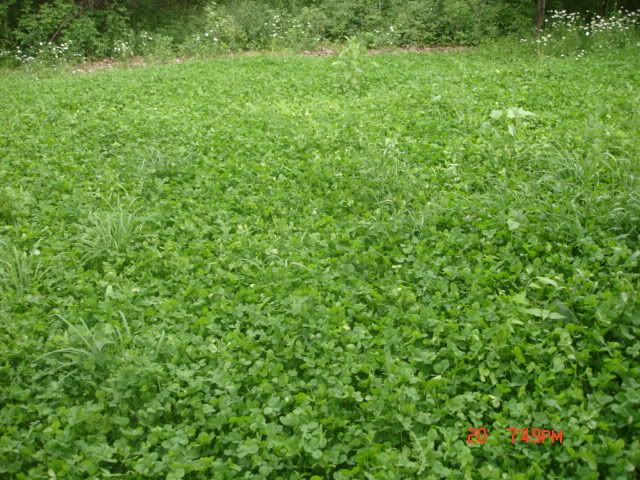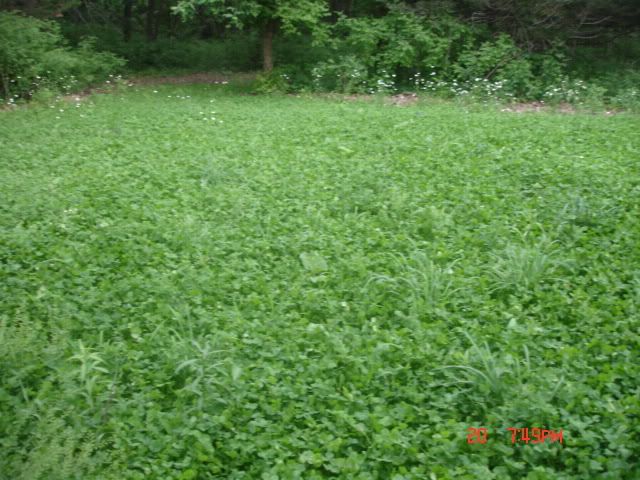

You are using an out of date browser. It may not display this or other websites correctly.
You should upgrade or use an alternative browser.
You should upgrade or use an alternative browser.
Clover
- Thread starter dbltree
- Start date
dbltree
Super Moderator
Which White clover would you recommend in this situation Dbl.?
Any white clovers will do fine but Alice is certainly my favorite as it is very drought resistant.
If the pond rises and stays there for more then a day or so, I think almost anything you plant will drown with the exception of water type plants or someting like reeds canary grass. RC grass can get invasive and crowd out everything else so I'm not fond of that either.
Clovers like moist heavy ground and alsike can tolerate it better then whites but none of them are going to stand prolonged flooding.
I visited the plot over the weekend. Last fall I planted winter rye and a white clover mix. It looks like once the rye is gone, there are going to be some good sized bald spots. I probably didn't get the clover seed spread evenly. Should I spread some clover seed in those spots this spring? If so, should I pack it or would the rain eventually work it in?
As a side note, thank you for all your help Dbltree. I got my biggest buck to date as he and a doe fed through the plot last fall.
As a side note, thank you for all your help Dbltree. I got my biggest buck to date as he and a doe fed through the plot last fall.
NovemberSunrise
New Member
If they are indeed bald, seeding would probably be a good idea. FWIW, I did some general frost seeding broadcasting of clover and a little later on did some additional seeding and pressed it into the soil. The seed that was pressed into the soil germinated much quicker and seemingly fuller than the seed that I just left to the rain to pack.Should I spread some clover seed in those spots this spring? If so, should I pack it or would the rain eventually work it in?
dbltree
Super Moderator
If they are indeed bald, seeding would probably be a good idea. FWIW, I did some general frost seeding broadcasting of clover and a little later on did some additional seeding and pressed it into the soil. The seed that was pressed into the soil germinated much quicker and seemingly fuller than the seed that I just left to the rain to pack.
Good advice...pack it if you can or seed the bare spots at a heavy rate and let the rain help it make soil contact...
dbltree
Super Moderator
Some mid May 2009 pics of 2nd year white clover that was spring planted with oats and was a mix of Alice, KopuII, Jumbo Ladino white clovers and a "smidge" of Starfire Red Clover... 
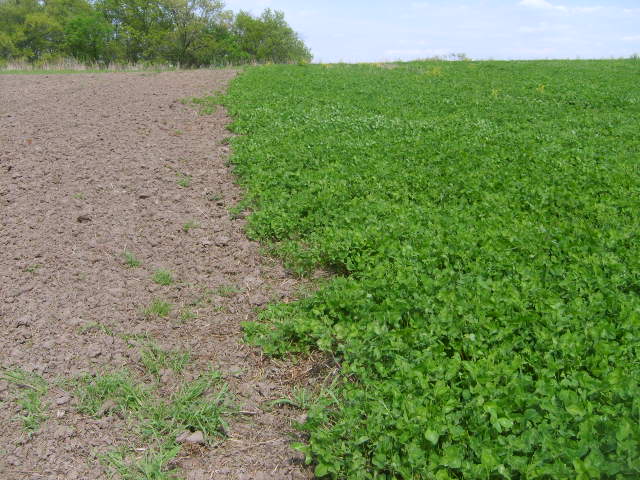
I seeded the clover mix along with 10#'s of Berseem Clover and 100#'s of oats in May last year, clipped the oats off in mid summer and sprayed with Select (clethodim) to control a flush of foxtail that emerged,
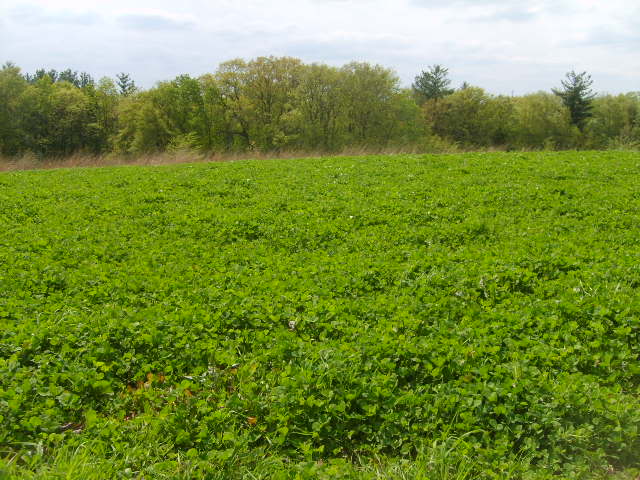
It's going to need to be clipped soon soon but note that the clover is very thick and there are little if any weeds or grasses this year.
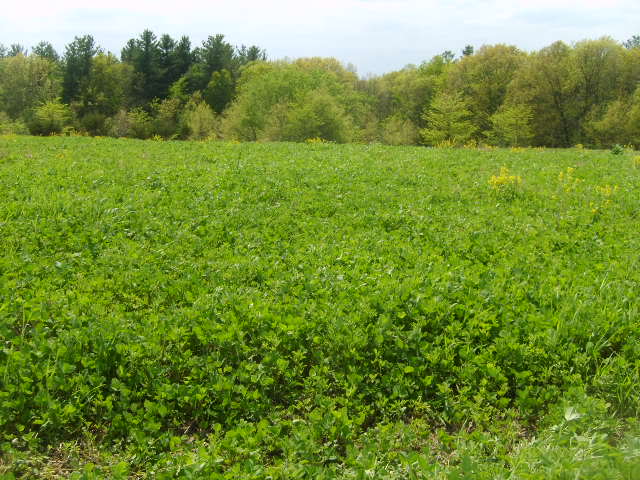
You can see the various leaf sizes from the smaller leafed white clovers,the medium size ladino clovers and the large leafed red clovers.
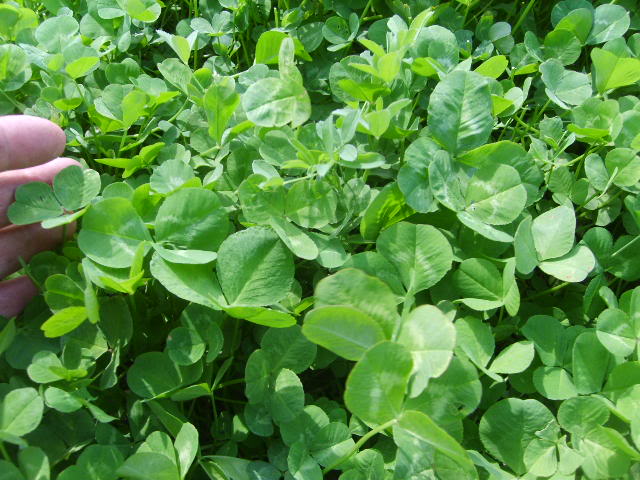

I seeded the clover mix along with 10#'s of Berseem Clover and 100#'s of oats in May last year, clipped the oats off in mid summer and sprayed with Select (clethodim) to control a flush of foxtail that emerged,

It's going to need to be clipped soon soon but note that the clover is very thick and there are little if any weeds or grasses this year.

You can see the various leaf sizes from the smaller leafed white clovers,the medium size ladino clovers and the large leafed red clovers.

dbltree
Super Moderator
This pic shows the clover is being grazed but even with my high deer densities they cannot control the clover by grazing.
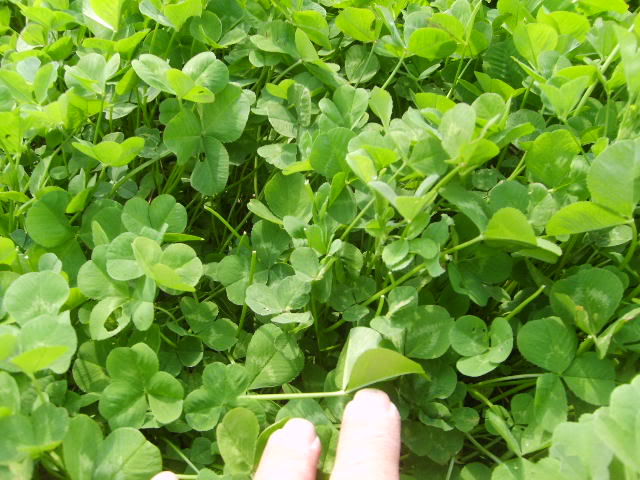
This is Mammoth Red Clover used as a plow down that was seeded last fall with oats and winter rye, the oats are long gone of course but the rye remains.
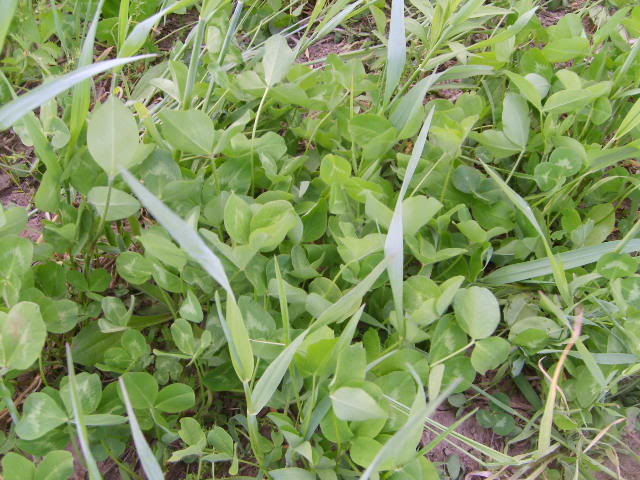
Adding red clover to a fall cereal grain planting insures that we'll have early spring grazing, a legume that will be hard at work fixing nitrogen and a source of organic matter to build soil humous when we till it under for the next summers plot of brassicas or more cereal grains.

In this case I had just no-tilled soybeans into this stand so it all looks pretty "ragged" after being ran of by tractor and planter
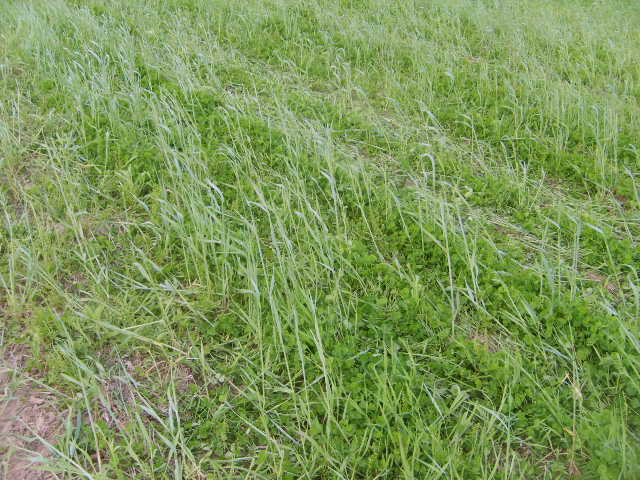
I'll watch the emerging soybeans carefully and kill the clover with roundup when it the clover becomes to competitive for the beans. In the meantime however, the red clover will hold soil moisture and provide some protection from foraging turkeys and deer who love to walk down the rows and nip off the newly emerging soys.
I was surprised to find last year that where I have over planted into the clover that the soys actually grew better then where they were exposed to marauding deer.

This is Mammoth Red Clover used as a plow down that was seeded last fall with oats and winter rye, the oats are long gone of course but the rye remains.

Adding red clover to a fall cereal grain planting insures that we'll have early spring grazing, a legume that will be hard at work fixing nitrogen and a source of organic matter to build soil humous when we till it under for the next summers plot of brassicas or more cereal grains.

In this case I had just no-tilled soybeans into this stand so it all looks pretty "ragged" after being ran of by tractor and planter

I'll watch the emerging soybeans carefully and kill the clover with roundup when it the clover becomes to competitive for the beans. In the meantime however, the red clover will hold soil moisture and provide some protection from foraging turkeys and deer who love to walk down the rows and nip off the newly emerging soys.
I was surprised to find last year that where I have over planted into the clover that the soys actually grew better then where they were exposed to marauding deer.
dbltree
Super Moderator
I'm taking advantage of the areas between my tree plantings to gow additional food plots and started by planting oats and berseem clover. The soil in these areas has not been worked in at least 30 years.... :shock:
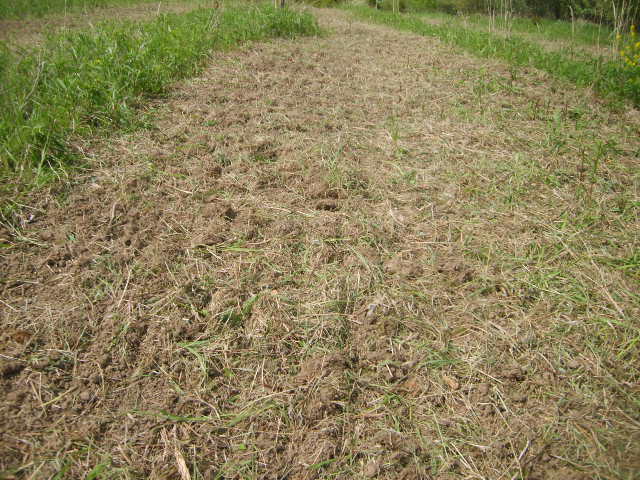
The oats and berseem make good cover crops to naturally help suffucate sod grasses and weeds ahead of fall plantings.
Clover has many uses and provide plenty of options, some that we don't often think of as in using it for plowdowns and a source of naturally free nitrogen.

The oats and berseem make good cover crops to naturally help suffucate sod grasses and weeds ahead of fall plantings.
Clover has many uses and provide plenty of options, some that we don't often think of as in using it for plowdowns and a source of naturally free nitrogen.
dbltree
Super Moderator
I'm testing the High Sugar Ryegrass (not to be confused with field rye) marketed in a mix for deer with clover and purple top turnips. Perennial ryegrass is what is grown in lawns and normally would not be considered that attractive to deer. Development of high sugar varieties for grazing cattle and sheep however have led to the discovery that deer also like this tasty grass.
Just to clarify, so people don't get confused...this is perennial ryegrass...
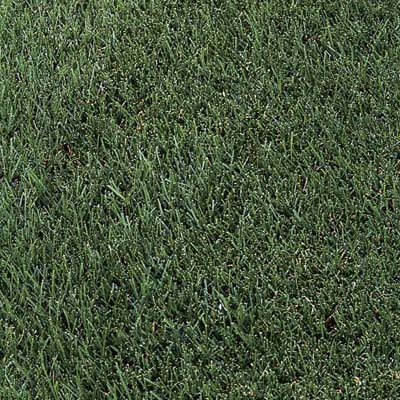
This is what cereal rye (fall rye grain, winter rye) looks like in the spring
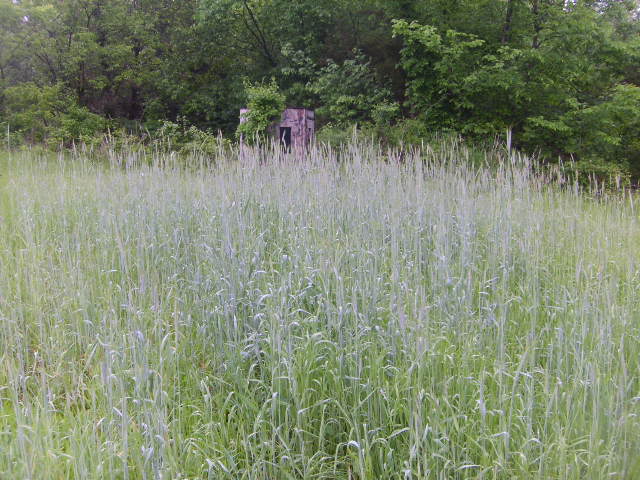
Basically like wheat...and nothing remotely like ryegrass...
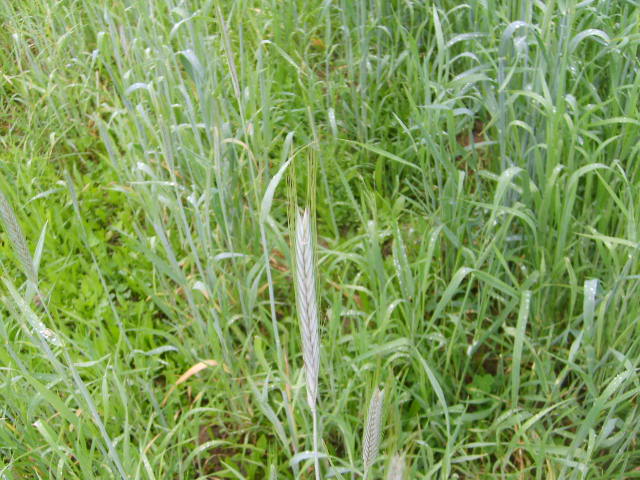
Sweetspot is a product of Grassland Oregon's SucraSEED division:
Grassland Oregon
SucraSEED
Like any plot food cource there are pros and cons to be considered. Because this product it centered around "grass" there is no way to control invasive grasses so it's imperitive that fescue, brome and other cool seasons be completely killed via one or more roundup applications.
If this isn't done first, those invasive grasses will return and eventually the plot will become an unpalatable mix of grasses that deer simply are not interested in.
Periodic mowing will also be required to keep the grass from going to seed and becoming stemmy and unpalatable, not unlike clipping clover plots occasionally.
Should you decide to switch the plot to something else it may require several applications of gly to completely kill the ryegrass.
On the plus side, for those with minimal equipment this product could be a long term food plot capable of withstanding heavy grazing in high deer density areas.
It's possible the grasses will remain attractive after clovers have wilted but that I will have to see for myself.
This is a plot I established earlier this spring buteven after nearly a month the HS ryegrass is barely larger then "hair" and hardly visable in this pic. and only the turnips show up and this point.
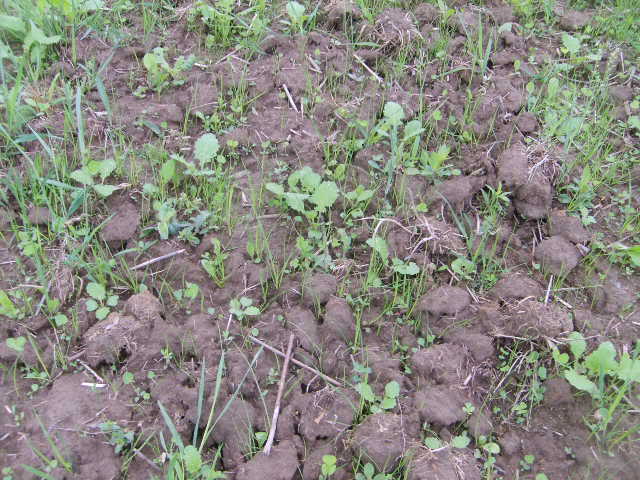
I have several plots that I have been working on killing the brome grass first and as soon as I'm confident that they are dead I'll seed several more plotss including some in a tree planting where I will be able to compare side by side this fall with seperate plots of brassicas and a field rye, oat and austrian winter pea combo.
Trail cameras and exclusian cages will verify usage and the length of time the ryegrass remains green and attractive.
Stay tuned...
Just to clarify, so people don't get confused...this is perennial ryegrass...

This is what cereal rye (fall rye grain, winter rye) looks like in the spring

Basically like wheat...and nothing remotely like ryegrass...

Sweetspot is a product of Grassland Oregon's SucraSEED division:
Grassland Oregon
SucraSEED
Like any plot food cource there are pros and cons to be considered. Because this product it centered around "grass" there is no way to control invasive grasses so it's imperitive that fescue, brome and other cool seasons be completely killed via one or more roundup applications.
If this isn't done first, those invasive grasses will return and eventually the plot will become an unpalatable mix of grasses that deer simply are not interested in.
Periodic mowing will also be required to keep the grass from going to seed and becoming stemmy and unpalatable, not unlike clipping clover plots occasionally.
Should you decide to switch the plot to something else it may require several applications of gly to completely kill the ryegrass.
On the plus side, for those with minimal equipment this product could be a long term food plot capable of withstanding heavy grazing in high deer density areas.
It's possible the grasses will remain attractive after clovers have wilted but that I will have to see for myself.
This is a plot I established earlier this spring buteven after nearly a month the HS ryegrass is barely larger then "hair" and hardly visable in this pic. and only the turnips show up and this point.

I have several plots that I have been working on killing the brome grass first and as soon as I'm confident that they are dead I'll seed several more plotss including some in a tree planting where I will be able to compare side by side this fall with seperate plots of brassicas and a field rye, oat and austrian winter pea combo.
Trail cameras and exclusian cages will verify usage and the length of time the ryegrass remains green and attractive.
Stay tuned...
Crimson Arrows
Well-Known Member
We have yet to mow our clover this year and it is getting THICK. One of the plots also has rye planted last fall with the clover to build the soil, and as a food source. In any case, would mowing at this time cause too much debris that it would affect the clover underneath OR would you have a buddy come and bail the clover? If it won't hurt it, I would just assume take my tractor up there and clip it but if the debris with "suffocate" the clover, I can have it bailed. Thanks.
dbltree
Super Moderator
Nannyslayer asked me to try some Red Carpet Brand Red Clover seed last spring and I have to say they are really hammering that stuff this spring!
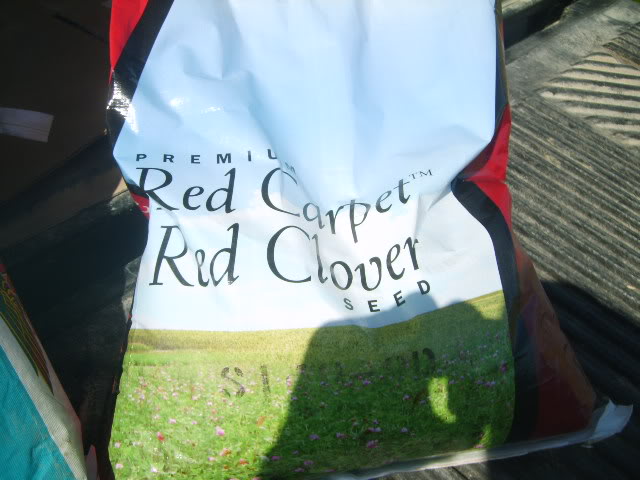
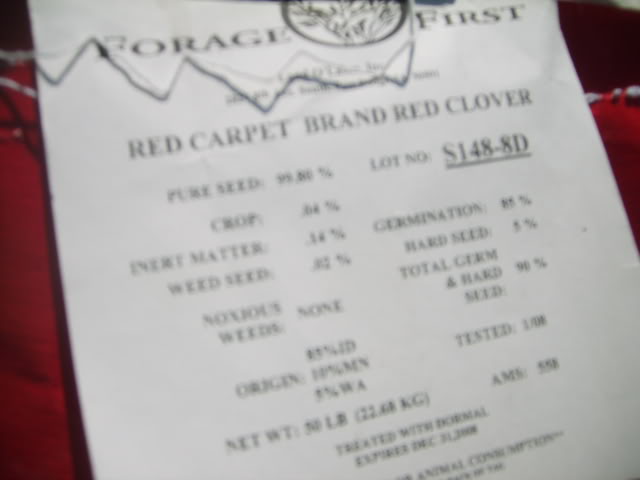
They are eating all of my clovers and alfalfa's but I noticed this RC is really getting hit hard.
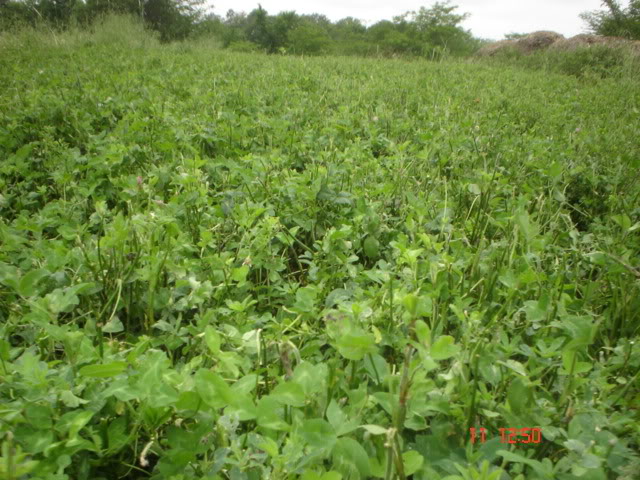
These pictures show both red clover and falcata alfalfa mixed and all grazed to the same height
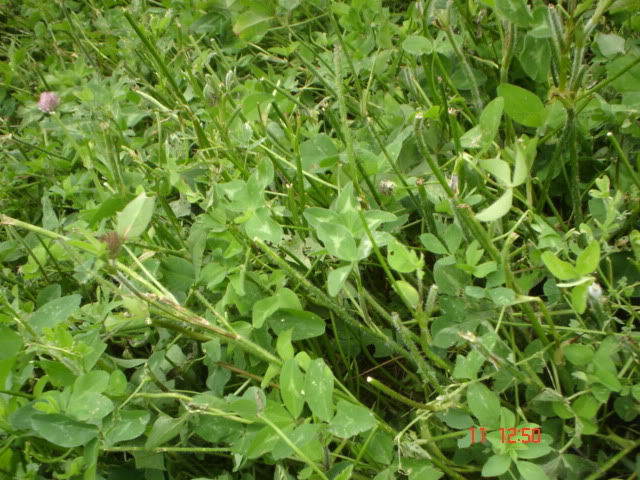
Deer beds all over in it
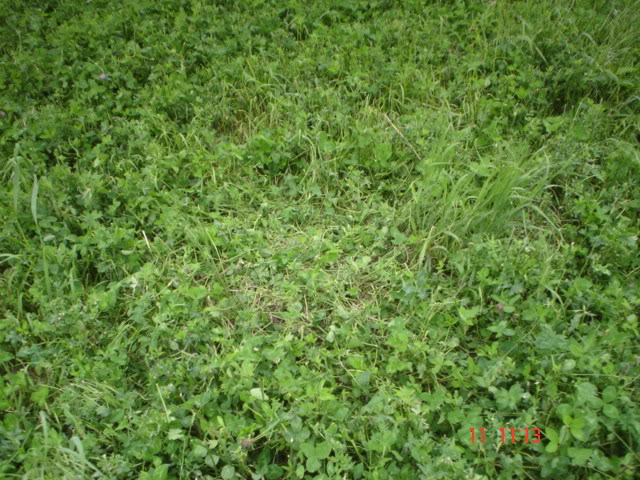
The red clover however has a larger stem and it's now getting to the point of needing to be mowed to keep it tender. Unlike white clovers that have very fine, tender stems, RC stems get large and stemmy if no kept mowed
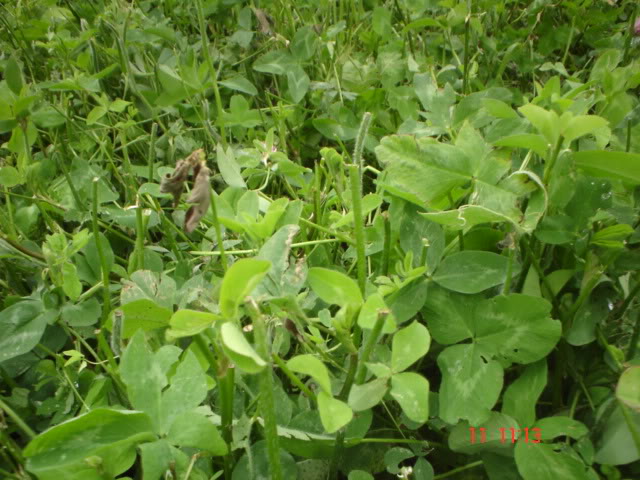
Great clover to add to alfalfa, or frost seed into alfalfa to fill in or if mowing is easy for you then just plant it by itself...


They are eating all of my clovers and alfalfa's but I noticed this RC is really getting hit hard.

These pictures show both red clover and falcata alfalfa mixed and all grazed to the same height

Deer beds all over in it

The red clover however has a larger stem and it's now getting to the point of needing to be mowed to keep it tender. Unlike white clovers that have very fine, tender stems, RC stems get large and stemmy if no kept mowed

Great clover to add to alfalfa, or frost seed into alfalfa to fill in or if mowing is easy for you then just plant it by itself...
ayr_aca_cs
New Member
Frost seeded first white clover earlier this spring. Just went to check on it and there are a lot of weeds in the one acre plot. What would be good to spray on the weeds? When would be a good time? I do not have a pull behind sprayer, would a 4 gal. back pack sprayer work ok? I figured I will have to refill at least once. Thanks for any help.
dbltree
Super Moderator
Frost seeded first white clover earlier this spring. Just went to check on it and there are a lot of weeds in the one acre plot. What would be good to spray on the weeds? When would be a good time? I do not have a pull behind sprayer, would a 4 gal. back pack sprayer work ok? I figured I will have to refill at least once. Thanks for any help.
If they are weeds as in "broadleaves" then I would try clipping them off 8-10" high first but if it's grass then you may need to use a grass selective herbicide such as Select 2-EC (clethodim) at 6-8 ounces per acre along with a quart of crop oil per acre.
2-4DB Butryac 200 (NOT 2-4D) will work on broadleaves in clover if you decide you need to go that route.
Check with your local farm supply that sells farm herbicides and fertilizers.
I commonly spray mine with a back pack sprayer (back up in this thread to see pics and more info)
You need to have some idea how much 4 gallons will cover first before knowing how much to mix.
Check the herbicde thread for labels, online herbicide sources and links to calibrating your sprayer.
dbltree
Super Moderator
Some thoughts and notes on using herbicdes and mowing clover here in Late June....
I no-tilled soybeans into a field of cereal rye and red clover this spring with plans to kill the clover with roundup after the beans emerged. Several weeks ago I applied 1 - 1/2 quarts of glyphosate per acre which totally nuked everything except....
the clover
You can see the dead rye and other weeds but the clover is thriving despite the roundup application...
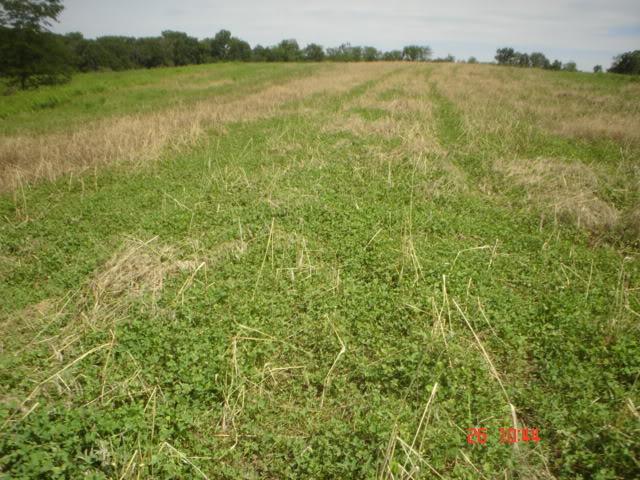
That clover was planted last fall and it is a well known fact that clover is somewhat resistant to glyphosate so at lower rates it can be an economical means of cleaning up a weedy plot.
Backpack sprayers are difficult to accurately calibrate so I suggest spraying a test area first, using care to evenly apply the gly. I have often killed young annual broadleaves and grasses with only a pint or two of roundup per acre, so consider starting light and see if you can get a kill of the undesirables with the least amount of product first.
The best way to actually kill clover is with a combinaton of glyphosate and 2-4D or tilling the clover under will do the trick.
This is a plot of Alice, KopuII and Jumbo Ladino white clovers planted at roughly 2#'s each a year ago in the spring at a cost of roughly $30 an acre via Welter Seed. High quality, high protien, drought resistant clovers at a very reasonable cost...
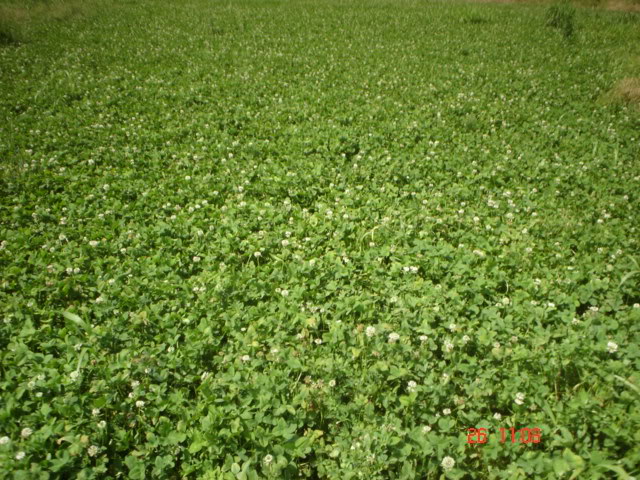
White clovers make an awesome insect attractant for turky and pheasant broods to safely feed in
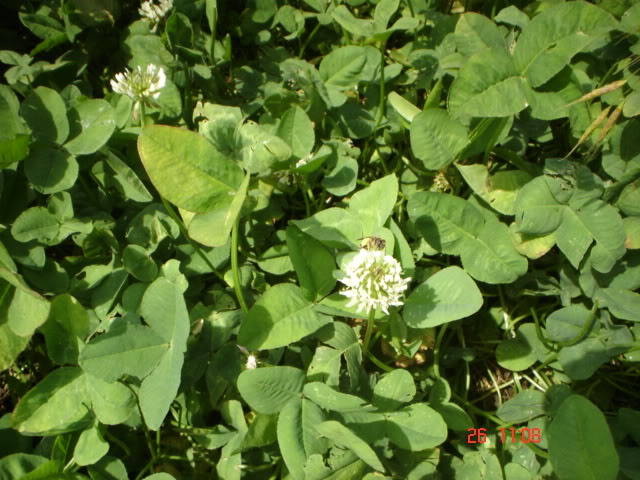
This is heavily grazed red clover
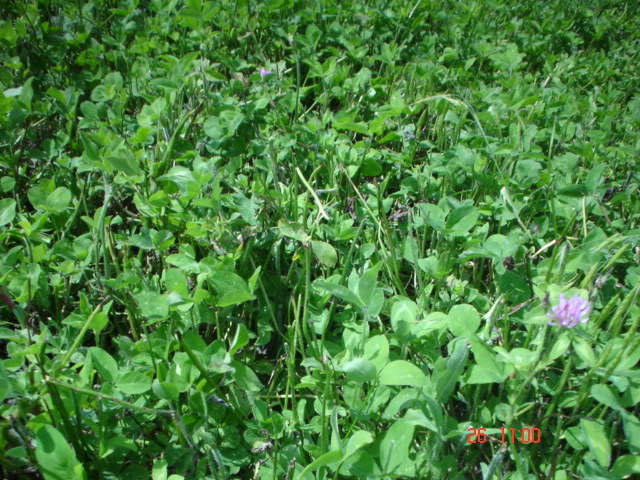
and just as heavily grazed white clover
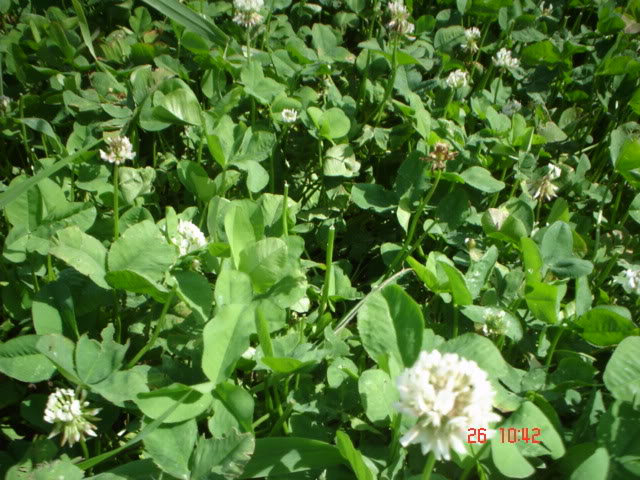
The white clover is blooming heavily here in Late June
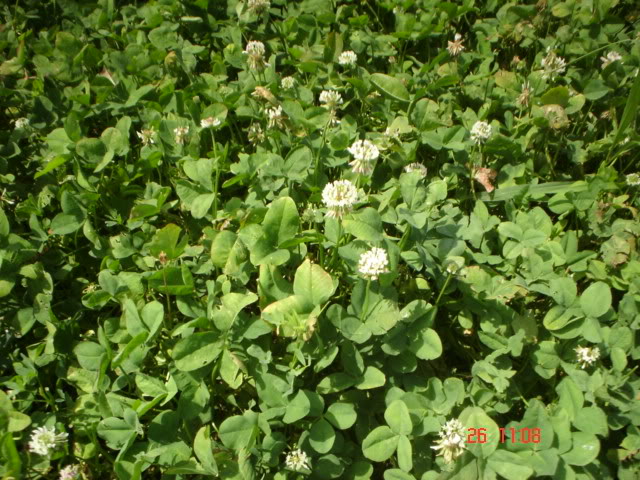
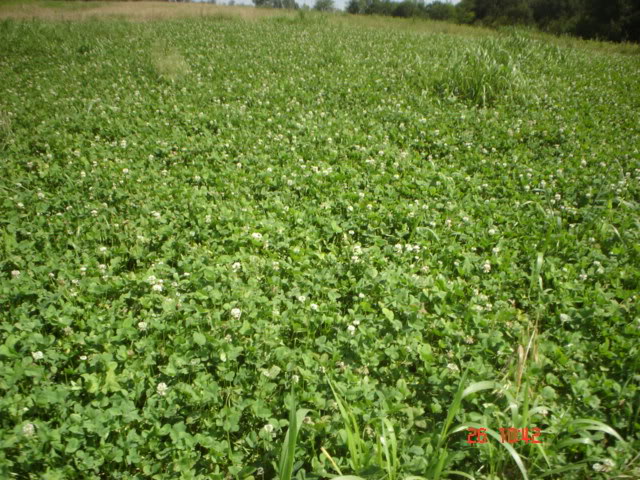
So before hot dry summer weather discourages growth I clipped a test plot that has Alice white clover on one side and Imperial White clover on the other side. Deer had been feeding on both but a few weeds and grasses were coming up as shown in this pic.
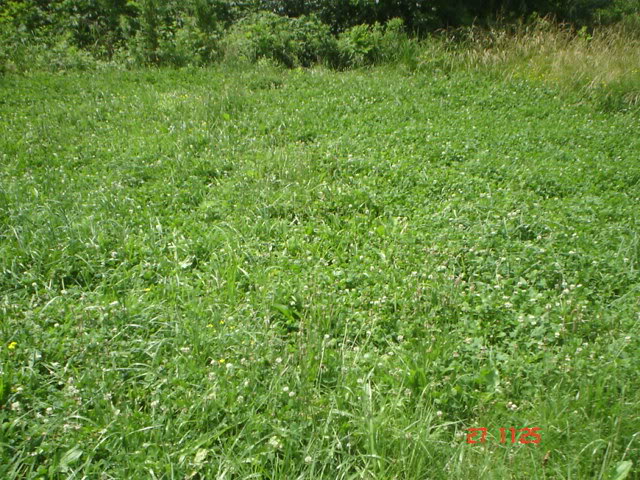
I try not to "mow" the clover but rather clip it 4-6" high if possible, difficult to show in pics but these are "after mowing pics"
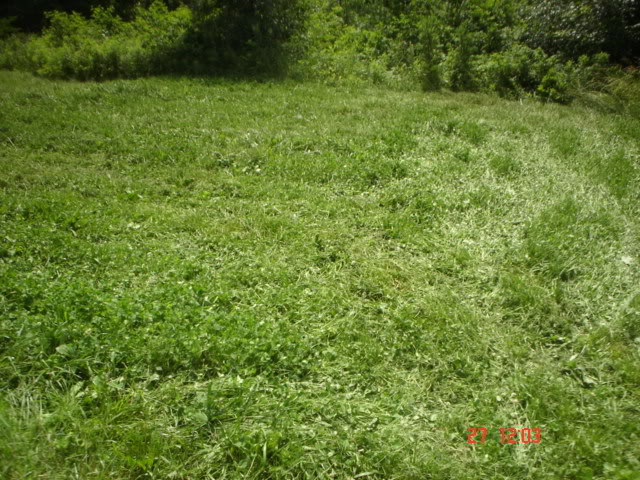
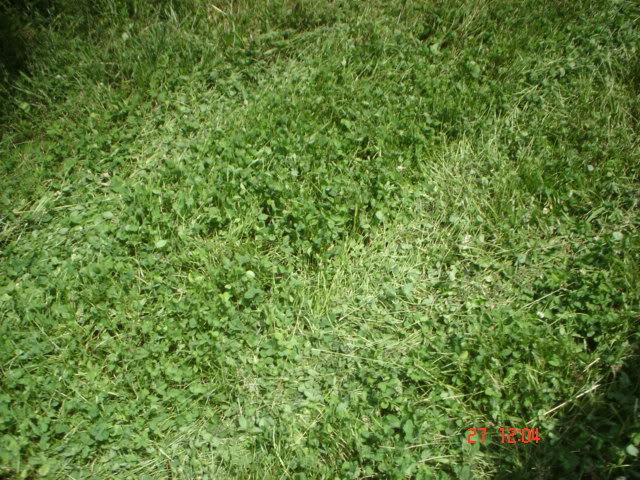
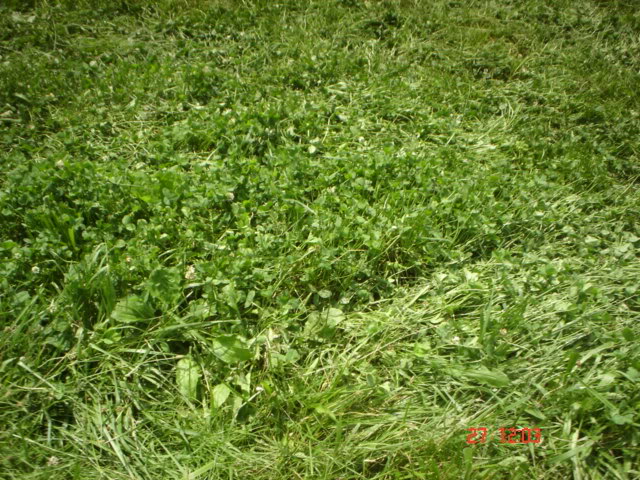
I made a second pass thru both clovers dropping the mower close to the ground and I'll mow that strip close each time to see if there is any long term effects.
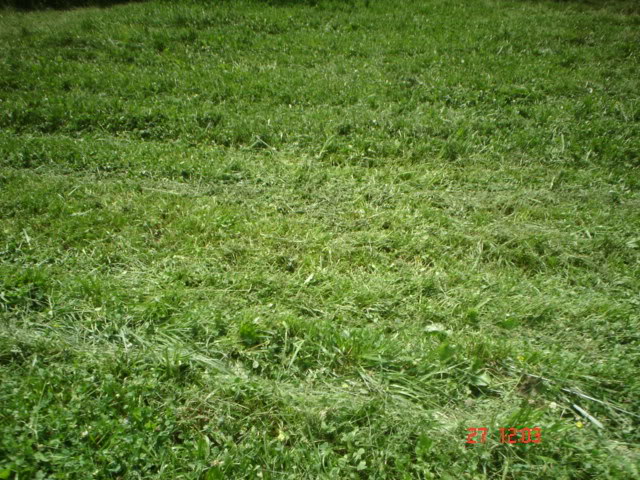
I also had red clover seeded last fall with cereal rye
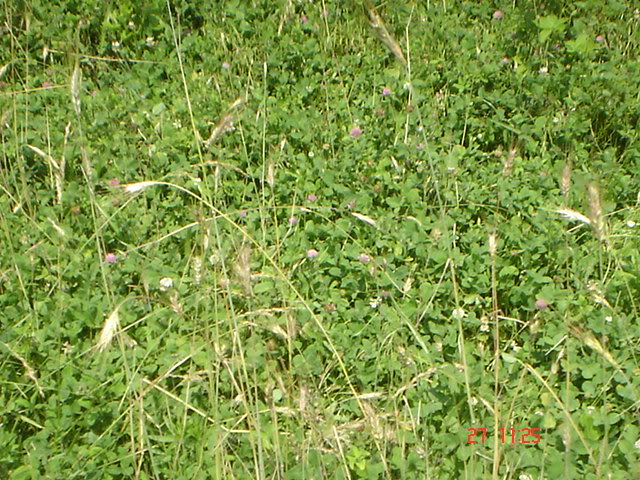
and clipped that 6-8" high to keep it flowering and fixing nitrogen so that I can till it under later this summer and achieve maximum nitrogen fixation.
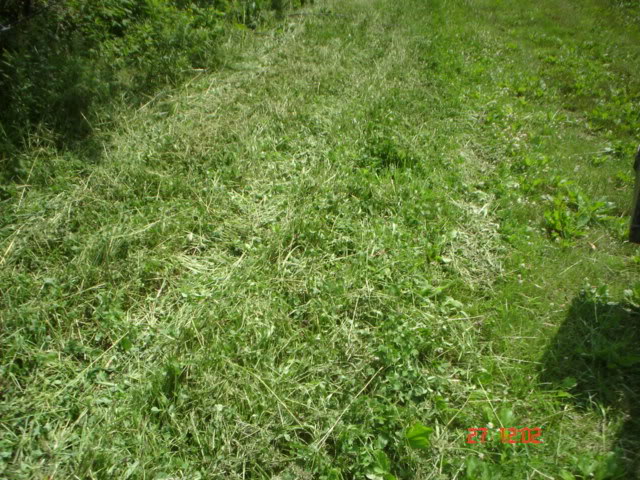
When clover stops flowering and goes to seed, the plants stop fixing nitrogen...not a big deal in long term plots but for a plowdown we want them to keep "working" for us...
My berseem and oats is pretty much just berseem now as deer have lapped up the oats at a rapid rate!

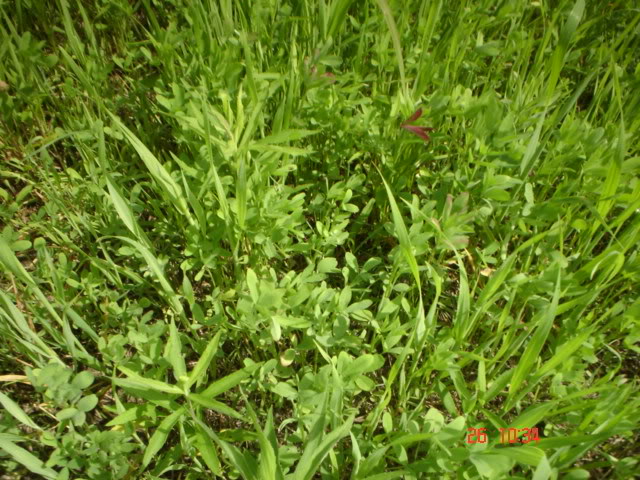
I was very late getting them in due to wet weather but they'll still accomplish my goal of adding nitrogen and oragnic matter to the soil when I till them in in late summer.
In the meantime deer are foraging on the tender young berseem and becoming adapted to this new feeding area....

I no-tilled soybeans into a field of cereal rye and red clover this spring with plans to kill the clover with roundup after the beans emerged. Several weeks ago I applied 1 - 1/2 quarts of glyphosate per acre which totally nuked everything except....
the clover
You can see the dead rye and other weeds but the clover is thriving despite the roundup application...

That clover was planted last fall and it is a well known fact that clover is somewhat resistant to glyphosate so at lower rates it can be an economical means of cleaning up a weedy plot.
Backpack sprayers are difficult to accurately calibrate so I suggest spraying a test area first, using care to evenly apply the gly. I have often killed young annual broadleaves and grasses with only a pint or two of roundup per acre, so consider starting light and see if you can get a kill of the undesirables with the least amount of product first.
The best way to actually kill clover is with a combinaton of glyphosate and 2-4D or tilling the clover under will do the trick.
This is a plot of Alice, KopuII and Jumbo Ladino white clovers planted at roughly 2#'s each a year ago in the spring at a cost of roughly $30 an acre via Welter Seed. High quality, high protien, drought resistant clovers at a very reasonable cost...

White clovers make an awesome insect attractant for turky and pheasant broods to safely feed in

This is heavily grazed red clover

and just as heavily grazed white clover

The white clover is blooming heavily here in Late June


So before hot dry summer weather discourages growth I clipped a test plot that has Alice white clover on one side and Imperial White clover on the other side. Deer had been feeding on both but a few weeds and grasses were coming up as shown in this pic.

I try not to "mow" the clover but rather clip it 4-6" high if possible, difficult to show in pics but these are "after mowing pics"



I made a second pass thru both clovers dropping the mower close to the ground and I'll mow that strip close each time to see if there is any long term effects.

I also had red clover seeded last fall with cereal rye

and clipped that 6-8" high to keep it flowering and fixing nitrogen so that I can till it under later this summer and achieve maximum nitrogen fixation.

When clover stops flowering and goes to seed, the plants stop fixing nitrogen...not a big deal in long term plots but for a plowdown we want them to keep "working" for us...
My berseem and oats is pretty much just berseem now as deer have lapped up the oats at a rapid rate!


I was very late getting them in due to wet weather but they'll still accomplish my goal of adding nitrogen and oragnic matter to the soil when I till them in in late summer.
In the meantime deer are foraging on the tender young berseem and becoming adapted to this new feeding area....

Crimson Arrows
Well-Known Member
Great post Dbltree. I was curious if the clover fixes nitrogen INTO the soil while it is growing or only once it is tilled/mowed? I assume its the living plant giving N it produces back into the soil while it grows but wanted to check with you on that. We just clipped ours on Saturday for the first time this year. It was a JUNGLE. Luckily we have unseasonably cool weather this week in SE Iowa. Thanks.
dbltree
Super Moderator
Great post Dbltree. I was curious if the clover fixes nitrogen INTO the soil while it is growing or only once it is tilled/mowed? I assume its the living plant giving N it produces back into the soil while it grows but wanted to check with you on that. We just clipped ours on Saturday for the first time this year. It was a JUNGLE. Luckily we have unseasonably cool weather this week in SE Iowa. Thanks.
Legumes are "fixing" N and using it while growing, but it is unavailable to other plants until the legume dies and is decomposing.
Most N is in the roots but some is in all parts of the plant, so tilling it under while green is the best method to make the N avilable to the next crop.
Clover slows or stops fixing N when it finishes flowering and sets seed, so keeping it clipped as it goes into full bloom keeps it working so too speak.
